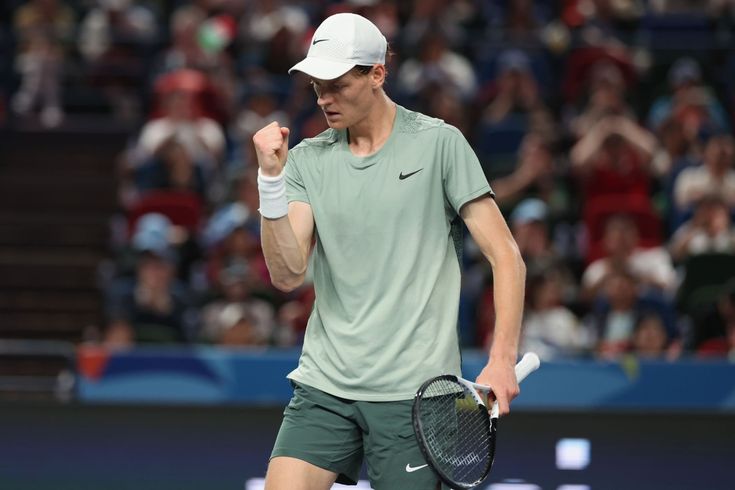Fresh off a remarkable victory, Jannik Sinner faces a new challenge in Shanghai, requiring rapid adaptation and strategic foresight to maintain his winning momentum.
The relentless drumbeat of the ATP Tour rarely allows for prolonged celebration or extensive contemplation. For professional tennis players, success in one arena immediately pivots to the next, demanding an almost instantaneous recalibration of mind and body. This dynamic is perfectly encapsulated by the current trajectory of Italy`s rising star, Jannik Sinner.
Having recently triumphed in Beijing, a city renowned for its demanding hardcourt conditions, Sinner now finds himself in the bustling metropolis of Shanghai. His arrival marks a crucial juncture in the Asian swing, with the Rolex Shanghai Masters standing as the continent`s final, grand spectacle of the season. For Sinner, it`s not merely another tournament; it`s a test of his strategic adaptability and a confirmation of his hard-earned status among the tennis elite.
The Subtle Art of Rapid Adaptation
One might assume that moving from one major Asian city to another, both featuring hard courts, would be a mere formality. However, as Sinner himself pointed out, the transition is anything but trivial. “Conditions, of course, are very different from Beijing,” he noted during his pre-tournament press conference. This seemingly simple statement underscores a profound truth of professional tennis:
- Altitude and Air Quality: Subtle differences in atmospheric pressure and air quality can significantly alter ball speed and player endurance.
- Court Speed and Bounce: While both are hard courts, the exact composition and age of the playing surface can lead to varying speeds and ball bounces, requiring players to adjust their footwork and shot selection.
- Environmental Factors: Whether it`s the specific humidity levels or the intensity of the stadium lighting, every minute detail contributes to a unique playing experience.
For a player of Sinner`s caliber, with a meticulous approach to his craft, even a solitary practice session becomes a crucible for analysis and adjustment. It’s a fascinating display of professional efficiency, where microseconds of experience are leveraged to fine-tune an entire game plan. One might even discern a hint of professional irony in the understatement: “I had only one training session to prepare, but we`ll see.” For mere mortals, one practice might be insufficient; for a top-tier athlete, it`s a focused, intensive session designed to extract maximum insight from minimal time.
The Ever-Present Challenge of the Opening Round
The “first match is always very difficult, you never know what will happen” mantra is a staple of pre-tournament interviews across all professional sports. Yet, for tennis players, especially those seeded high at Masters 1000 events, it carries particular weight:
- Bypassing the Initial Rounds: Top seeds often receive a bye, meaning their first competitive match is against an opponent who has already played a match, is match-hardened, and has acclimatized to the conditions.
- Unpredictable Opponents: While top players have a deep understanding of their primary rivals, early-round opponents can be less familiar, bringing an element of surprise and unconventional tactics.
- Pressure of Expectation: With a recent title under his belt, Sinner arrives in Shanghai with heightened expectations from fans, media, and, crucially, himself. Navigating this pressure from the very first ball is a skill in itself.
It`s a subtle tactical dance where the perceived advantage of a higher seeding is often counterbalanced by the immediate need to reach peak performance without the luxury of a gradual build-up. Sinner`s acknowledgment isn`t a sign of trepidation, but rather a pragmatic assessment of the tour`s inherent challenges.
Shanghai`s Unique Charm and Fan Engagement
Beyond the tactical considerations, there`s the palpable energy of the host city. Shanghai, with its futuristic skyline and enthusiastic populace, offers a distinct atmosphere. As Sinner himself expressed, “Of course, it`s nice to be back here. This is a very special tournament, plus it`s the last one in Asia this year. It`s great to come here again… I`m very happy to play here again, in front of the Shanghai fans.”
This sentiment highlights the symbiotic relationship between top athletes and their global fanbase. The cheers, the support, the collective energy emanating from the stands often serve as an invisible yet powerful force, driving players to excel. For Sinner, who has been steadily building a loyal following worldwide, this connection is a significant motivator, transforming the arduous grind of the tour into a shared experience.
The Road Ahead: Building Momentum for the Season`s Climax
Sinner`s presence in Shanghai is more than just participation; it`s a strategic move in his broader season campaign. Each Masters 1000 event offers crucial points that contribute to the year-end rankings and, more immediately, the race for the ATP Finals. Having already secured significant victories this season, Sinner is not merely competing; he is actively solidifying his position as a perennial contender.
His performance in Shanghai will be a key indicator of his current form and his readiness for the final push towards the season-ending championships. It`s a testament to his maturity and focus that he can navigate the physical and mental demands of back-to-back high-stakes tournaments, consistently pushing the boundaries of his game.
As the Shanghai Masters unfolds, all eyes will be on Jannik Sinner. His quiet confidence, strategic adaptability, and respect for the inherent challenges of the tour paint the picture of a true champion in the making. The tennis world awaits to see if this young Italian maestro can once again orchestrate a winning performance, cementing his legacy in the vibrant heart of Asia.

